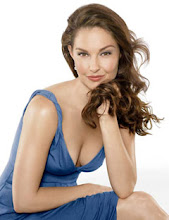
http://en.wikipedia.org/wiki/Jamal_Mashburn
Jamal Mashburn (born November 29, 1972 in New York City) is a retired American professional basketball player. A small forward, Mashburn was a prolific scorer in his 12 seasons in the league, with a career scoring average of 19.1 points per game. He is nicknamed "The Monster Mash"[citation needed] and "Masher".
Mashburn had a very successful basketball career in college, playing for the University of Kentucky. He was the fourth-leading career scorer for the Wildcats and a consensus First Team All-American by his junior year, prompting him to declare himself eligible for the 1993 NBA Draft. Selected 4th overall by the Dallas Mavericks, he was very successful as a rookie, leading all rookies with 19.2 points per game and breaking seven separate Mavericks rookie records along the way to an All-Rookie Team selection.
In his second year, along with third-year pro Jim Jackson and rookie Jason Kidd (collectively known as 'Triple J'), Mashburn led the Dallas Mavericks to the biggest turnaround in the NBA that year. He is the third-youngest player to score 50 points in an NBA game (LeBron James is the youngest). He also broke many franchise records and blossomed into one of the best scoring forwards in the league.
However, injuries reduced Mashburn's value and he was traded to the Miami Heat in the middle of the 1996-97 season. He played a reduced role in the Heat's offense, so his offensive production dipped. In 2000, he was traded to the Charlotte Hornets where, as leader of a young squad of players, he took on more of the scoring load and in 2003 was selected to the All-Star Game in Atlanta, playing for the East. In his first All-Star appearance, he scored 10 points and grabbed 4 rebounds in 14 minutes of play in a 155-145 double-overtime loss to the West.
Mashburn continued his stellar play in the 2003-04 season, but injuries plagued him for most of the year and he managed to play in only 19 games. Bothered by problems with his right knee (patella femoral irritation), he decided to sit out the 2004-05 season in hopes that his knee would recover. He had microfracture surgery performed on his knee, a risky surgery that not all players have been able to recover from.
Despite his decision to sit out the year due to his knee, the Hornets still traded Mashburn, along with Rodney Rogers, to the Philadelphia 76ers in exchange for forward Glenn Robinson on February 24, 2005. Mashburn was never able to recover from his chronic knee problems and never saw court time for Philadelphia. He was on the injured list for all of the 2004-05 season and the inactive list for 2005-06. On March 24, 2006, the 76ers waived Mashburn, who subsequently announced his retirement from the NBA. He had career averages of 19.1 points, 5.4 rebounds and 4.0 assists per game.
Mashburn lives in Miami, Florida with his wife Michelle, his daughter Taylor, his son Jamal also known as "J" and his golden retriever Scooby. He currently works for ESPN and appears on NBA Fastbreak.






